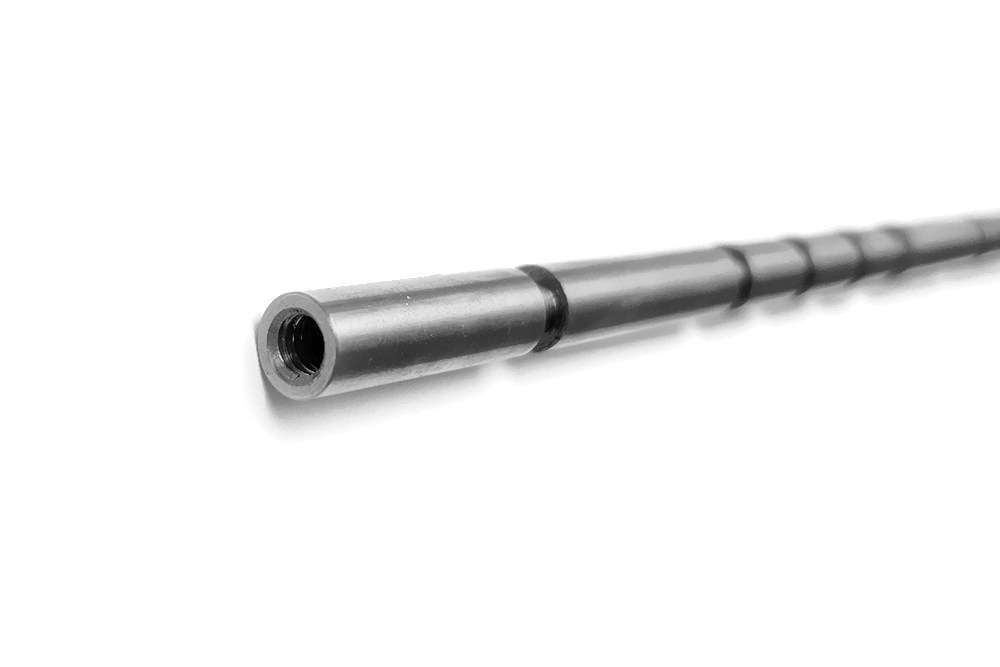The Impact of CNC Machined Parts in Renewable and Traditional Power Systems
Introduction
CNC machining is crucial in advancing renewable and traditional power generation systems. Precision-engineered CNC components ensure reliability, efficiency, and durability across various energy infrastructures, from wind turbines and solar arrays to gas turbines and nuclear reactors.
Leveraging sophisticated CNC machining manufacturing, power generation industries produce high-quality components that withstand challenging operational environments. CNC machining significantly increases energy output, reduces maintenance, and enhances overall system safety.
CNC Machining Steps
Component Design & Prototyping: CAD modeling and precise engineering analysis tailored for energy sector requirements.
Material Selection: Optimal materials are chosen for mechanical resilience, heat tolerance, and corrosion resistance.
Precision Fabrication: CNC machining to create precise, reliable components for energy generation equipment.
Quality Verification: Rigorous inspections ensure parts meet strict performance and safety standards.
Materials: Material Solutions for Power Generation Systems
Choosing suitable materials for CNC machining is vital to maintaining efficiency and durability in power systems. Below are commonly used materials:
Material | Properties | Advantages | Applications |
|---|---|---|---|
Tensile Strength: 1,000-2,000 MPa Operating Temp.: up to 1,100°C Excellent oxidation resistance | High-temperature strength, corrosion-resistant, superior durability | Gas turbines, nuclear reactors, turbine blades | |
Tensile Strength: 500-1,500 MPa Yield Strength: 250-1,200 MPa Excellent corrosion resistance | Robust, corrosion-resistant, capable of handling high pressures | Solar panel frames, turbine shafts, hydroelectric valves | |
Tensile Strength: 310-700 MPa Yield Strength: 280-500 MPa Density: 2.7 g/cm³ | Lightweight, corrosion-resistant, excellent machinability | Solar mounting structures, wind turbine nacelles | |
Tensile Strength: 200-350 MPa Electrical Conductivity: 100% IACS | Superior electrical and thermal conductivity, high durability | Transformers, generators, power transmission components |
Surface Treatment: Enhancing Power System Component Durability
Electropolishing
Functions: Electropolishing enhances corrosion resistance, reduces friction, and provides smooth, clean surfaces for critical components.
Key Features: Surface roughness down to 0.1 µm, improved lifespan under extreme conditions.
Applications and Scenarios: Turbine blades, valves, nuclear power system components.
Thermal Barrier Coatings
Functions: Thermal Barrier Coatings protect components from extreme heat, reducing thermal fatigue and extending component life.
Key Features: Withstands temperatures up to 1,300°C, significant heat insulation.
Applications and Scenarios: Gas turbine blades, combustion chambers, steam turbine components.
Galvanizing
Functions: Galvanizing provides robust protection against corrosion, increasing durability and lifespan.
Key Features: Zinc coating thickness typically 70-200 µm, highly effective corrosion protection.
Applications and Scenarios: Transmission towers, wind turbine structural supports, outdoor solar infrastructure.
Black Oxide Coating
Functions: Black Oxide Coating offers mild corrosion resistance, reduces friction, and enhances the appearance of metal parts.
Key Features: Uniform thickness (1-2 µm), cost-effective corrosion resistance.
Applications and Scenarios: Precision fasteners, control valves, internal turbine components.
CNC Machining Process Comparison
Distinct CNC machining processes offer specific advantages relevant to power system component production:
Process | Key Features | Application Scenarios |
|---|---|---|
Precision: ±0.0025 mm Efficient for complex, large-scale components | Turbine blades, renewable mounting systems, generator housings | |
Precision: ±0.0025 mm Ideal for cylindrical precision machining | Generator shafts, rotor shafts, turbine spindles | |
Precision: ±0.0025 mm hole accuracy Efficient hole-drilling for complex assemblies | Cooling channels, turbine casings, large-scale structural assemblies | |
Surface finish: up to 0.1 µm Dimensional accuracy and superior surface finish | Turbine rotor surfaces, precision bearings, hydraulic system components | |
Precision: ±0.0025 mm for highly complex geometries Flexible multi-directional machining | Complex blade geometries, intricate valve assemblies, advanced renewable energy components |
Considerations in Production
Material Resilience: Select materials that offer heat and corrosion resistance suited for demanding operational environments.
Tolerance Management: Regular calibration and inspection to ensure high-precision compliance.
Thermal Management: Precise thermal control and appropriate coatings to minimize thermal degradation during operations.
Component Longevity: Employ suitable surface treatments to maximize durability and reduce maintenance costs.
Industry and Applications
CNC machining is foundational across diverse power generation sectors:
Power Generation: Components for gas turbines, steam turbines, and generator systems.
Renewable Energy: Wind turbine hubs, solar energy mounting systems, hydroelectric equipment.
Oil and Gas: Components such as precision valves, drilling equipment, and extraction systems.
Industrial Equipment: Pumps, compressors, industrial turbines.
Nuclear Power: Reactor components, coolant system valves, containment structures.
FAQs
Why is CNC machining critical in renewable and traditional power systems?
What materials are commonly CNC machined for power generation components?
How does CNC machining enhance efficiency in power generation systems?
What are the essential surface treatments used for power generation components?
How do machining processes differ between renewable and traditional power system components?

